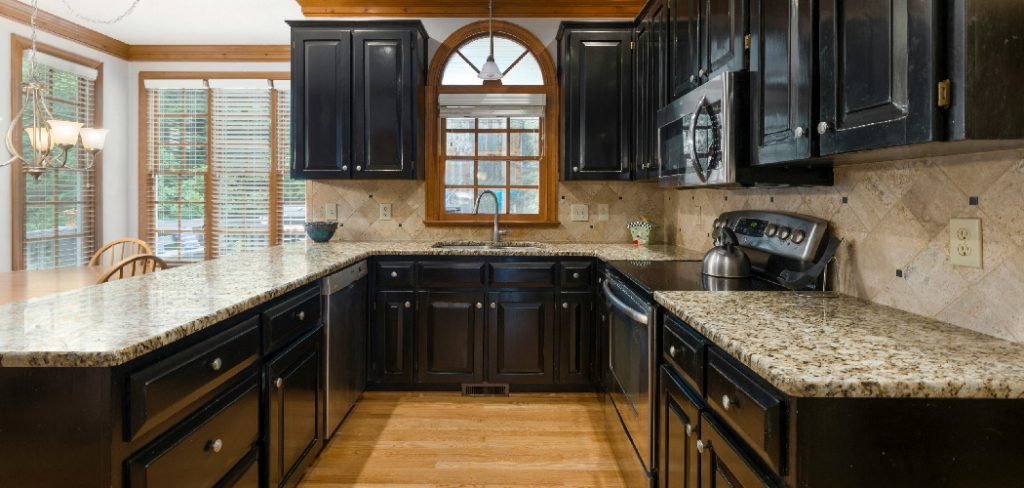Are you looking to sell kitchen cabinets and increase your profits? You’ve come to the right place!
How to sell kitchen cabinets effectively requires a combination of market knowledge, customer understanding, and compelling sales strategies. In an industry where functionality meets design, it’s crucial first to understand the needs and preferences of potential customers. This includes identifying their style preferences, budget constraints, and specific requirements for their kitchen space.

Sales professionals can build trust and rapport with clients by showcasing a detailed understanding of these elements and offering tailored solutions. Additionally, leveraging visuals such as detailed product images, testimonials, and virtual consultations can enhance sales.
Ultimately, successful kitchen cabinet sales hinge on connecting product benefits to customer needs, ensuring that every sale results in a satisfied and loyal customer.
What Will You Need?
Before diving into the sales process, having a few critical items on hand is essential. These will help you showcase your products effectively and make the overall process smoother and more efficient.
1. Product Catalog
This is an essential tool for any kitchen cabinet seller. It should include detailed information about each product, including images, dimensions, materials used, and pricing.
2. Samples
Having physical samples of your cabinets can significantly enhance the customer experience. They allow potential buyers to see and feel the quality of your products firsthand.
3. Virtual Design Tools
In today’s digital age, offering virtual design tools such as 3D renderings or online design consultations can be a game-changer for customers who want to see how the cabinets will look in their space.
4. Customer Testimonials
Word of mouth is a powerful marketing tool, and having satisfied customer testimonials can help build trust and credibility with potential buyers.
Once these items are in place, you’re ready to begin selling kitchen cabinets.
10 Easy Steps on How to Sell Kitchen Cabinets
Step 1. Research Your Market
Start by understanding the current trends in kitchen cabinet design and materials. This will help you identify what is popular and what different customer segments are looking for. Knowing your competitors’ offerings, pricing, and sales strategies can provide valuable insights. Use this information to position your products effectively and highlight unique features that set your cabinets apart.
Step 2. Understand Your Customer Base
Knowing your customer base is crucial for effectively tailoring your sales approach. Begin by gathering demographic information such as age, income level, and geographical location. Analyze customer feedback and purchasing patterns to identify shared preferences and needs. This will help you segment your customers into different groups, each with unique requirements.

Use this understanding to develop targeted sales strategies and product presentations that appeal directly to each segment. By anticipating customer needs and preferences, you can offer personalized solutions that resonate with them, ultimately enhancing customer satisfaction and driving sales growth.
Step 3. Showcase Your Products
Effectively displaying your kitchen cabinets is crucial in capturing customer interest and closing sales. Begin by arranging your showroom or display area to highlight your cabinets’ key features and benefits, such as innovative design elements, high-quality materials, or versatile storage solutions. Use well-lit spaces and appealing layouts to make the cabinets stand out.
Incorporate digital tools, like video tours or interactive online galleries, to allow customers to explore your offerings remotely. Ensure that all product displays are accompanied by detailed information on size, materials, and pricing to assist customers in making informed decisions.
Step 4. Build a Strong Brand Presence
Creating a distinctive and recognizable brand is crucial in a competitive market. Start by developing a unique brand identity that communicates the values and quality of your kitchen cabinets. This includes designing a memorable logo, choosing consistent color schemes, and crafting a compelling brand story. Invest in professional marketing materials that reflect your brand’s image, such as brochures and business cards.
Enhance your online presence through a professional website and active social media profiles, creating content that showcases your cabinets’ features and benefits. Engage with customers through informative blog posts, tutorials, or behind-the-scenes videos to build a community around your brand.
Step 5. Develop an Effective Sales Pitch
A compelling sales pitch is essential for persuading potential buyers and closing deals. Start by clearly articulating the unique selling points of your kitchen cabinets. Highlight durability, aesthetic appeal, customization options, or eco-friendliness. Tailor your pitch to address each customer segment’s specific needs and preferences identified in your earlier research.
Use storytelling techniques to create an emotional connection, demonstrating how your cabinets can transform their kitchen spaces and enhance their lifestyle. Be prepared to handle objections by providing well-researched responses and emphasizing the long-term value of your products. Practicing your pitch to ensure clarity and confidence can significantly improve your chances of success in the sales process.

Step 6 . Offer Transparent Pricing and Flexible Payment Options
Establishing clear and transparent pricing is vital to gaining customer trust and facilitating purchase decisions. Ensure that your pricing structure is easy to understand and reflects the value of your kitchen cabinets—display detailed pricing information on all marketing materials, product catalogs, and your website. Additionally, consider offering a range of flexible payment options to accommodate different customer budgets.
This could include installment plans, financing options, or discounts for upfront payments. Financial flexibility can make your products more accessible and appealing to a broader audience, ultimately increasing your sales and customer satisfaction.
Step 7. Provide Exceptional Customer Service
Delivering outstanding customer service is critical to building lasting relationships and encouraging repeat business. Train your sales team to be knowledgeable about your kitchen cabinets and empathetic to customer needs. Promptly respond to inquiries, offer insightful advice, and provide solutions tailored to each customer’s situation.
Strive to create a seamless purchasing experience, from the initial consultation to post-sale support. Address any concerns or issues promptly and professionally to ensure customer satisfaction. Consider implementing a feedback system to gather insights and continuously improve your service. Prioritizing exceptional customer service enhances customer loyalty and fosters positive word-of-mouth referrals.
Step 8. Implement a Robust Follow-Up Strategy:
Consistent follow-up can significantly influence customer retention and boost your sales efforts. Develop a structured follow-up plan that includes timely communications through phone calls, emails, and personalized messages. Touch base with customers to ensure they are satisfied with their purchase and offer further assistance or support.
Consider sending thank-you notes, exclusive offers, or information about new products that interest them. Utilize customer relationship management (CRM) tools to track interactions and preferences, enabling more personalized and effective follow-up interactions.

Step 9. Leverage Customer Testimonials and Reviews
Harnessing the power of positive feedback from satisfied customers can significantly enhance your sales strategy. Actively encourage your customers to share their experiences through testimonials and online reviews. Display these testimonials prominently on your website and marketing materials to build credibility and trust with potential buyers.
Highlight specific aspects where your kitchen cabinets have met or exceeded customer expectations, whether it’s the quality, design, or functionality. Consider featuring case studies or success stories that showcase the transformative effects of your products in real-world scenarios. Engaging with customers to gather their feedback not only boosts your brand’s reputation but also provides valuable insights into areas for improvement, ensuring continuous enhancement of your offerings.
Step 10. Monitor Performance and Sales Analytics
Regularly monitoring your sales performance and analyzing key metrics is crucial for optimizing your sales strategy and achieving growth. Implement advanced analytics tools to track various aspects of your sales process, such as conversion rates, average sales value, customer acquisition costs, and sales team performance.
Use these insights to identify areas needing improvement and make data-driven decisions. Set realistic sales targets and regularly assess whether you meet them, adjusting strategies as necessary. Additionally, keep an eye on market trends and competitor activities to stay agile and responsive to changing customer needs.
By following these steps and continuously refining your sales strategy, you can effectively market and sell your kitchen cabinets to a broader audience, driving business growth and success.
5 Things You Should Avoid
1. Overpromising Features
Avoid making exaggerated claims about the capabilities or materials of your kitchen cabinets. Customers appreciate transparency and honesty, and setting realistic expectations ensures they remain satisfied with their purchase.
2. Ignoring Customer Needs
Refrain from assuming a one-size-fits-all approach when selling kitchen cabinets. Listen to the customer’s requirements and preferences to provide personalized solutions that fit their vision and space.
3. Neglecting Aesthetic Appeal
While functionality is crucial, consider the importance of design and aesthetics. Customers often look for cabinets that complement their kitchen’s style, so ensure various designs and finishes are available.
4. Lack of Follow-Up
Failing to follow up with potential customers can lead to lost sales. After the initial interaction, a friendly follow-up can remind customers of your offerings and demonstrate your commitment to customer satisfaction.
5. Inadequate Knowledge of Products
Clients who are uninformed about the different types of kitchen cabinets, materials, or installation processes can turn away.

Conclusion
How to sell kitchen cabinets effectively requires a blend of knowledge, empathy, and strategic engagement.
Start by thoroughly understanding your products to answer any questions and build trust with your customers. Emphasize the features and benefits that align with each customer’s unique needs, showcasing your capacity to provide tailored solutions. Furthermore, consistent follow-up communications should be maintained to reinforce interest and address lingering hesitations. Prioritize both functionality and aesthetics in your offerings to ensure customers find the perfect match for their kitchen’s design.
Combining these elements allows you to successfully guide customers through their purchasing journey, resulting in a rewarding and fulfilling experience for both parties.
Professional Focus
Angela Ervin, a former interior designer turned blogger, specializes in kitchen design and renovations. Through her website, she blends her passion for cooking with design expertise, sharing practical and creative ideas. Known for balancing functionality and beauty, Angela’s insightful content has made her a trusted voice in home design and lifestyle.
About the Author
Angela Ervin, an experienced interior designer and blogger, combines her passion for kitchen renovations with storytelling. Living in Petersburg with her family, she enjoys cooking and testing her projects firsthand. Known for her humor and relatable style, Angela shares creative, functional design insights through her content, making her a trusted voice in home design.
Education History
University: Virginia Commonwealth University
Degree: Bachelor of Fine Arts (BFA) in Interior Design
- Angela’s education at VCU focused on mastering core interior design principles, including spatial planning, color theory, materials selection, and sustainable design practices.
- She gained hands-on experience through studio projects and collaborative design exercises, which honed her ability to create functional and aesthetically pleasing environments.
- Her coursework also emphasized problem-solving and practical applications of design, preparing her for real-world projects like her self-directed kitchen renovations.
- The program’s strong foundation in both technical skills and creative expression shaped Angela’s ability to seamlessly integrate form and function in her work.


